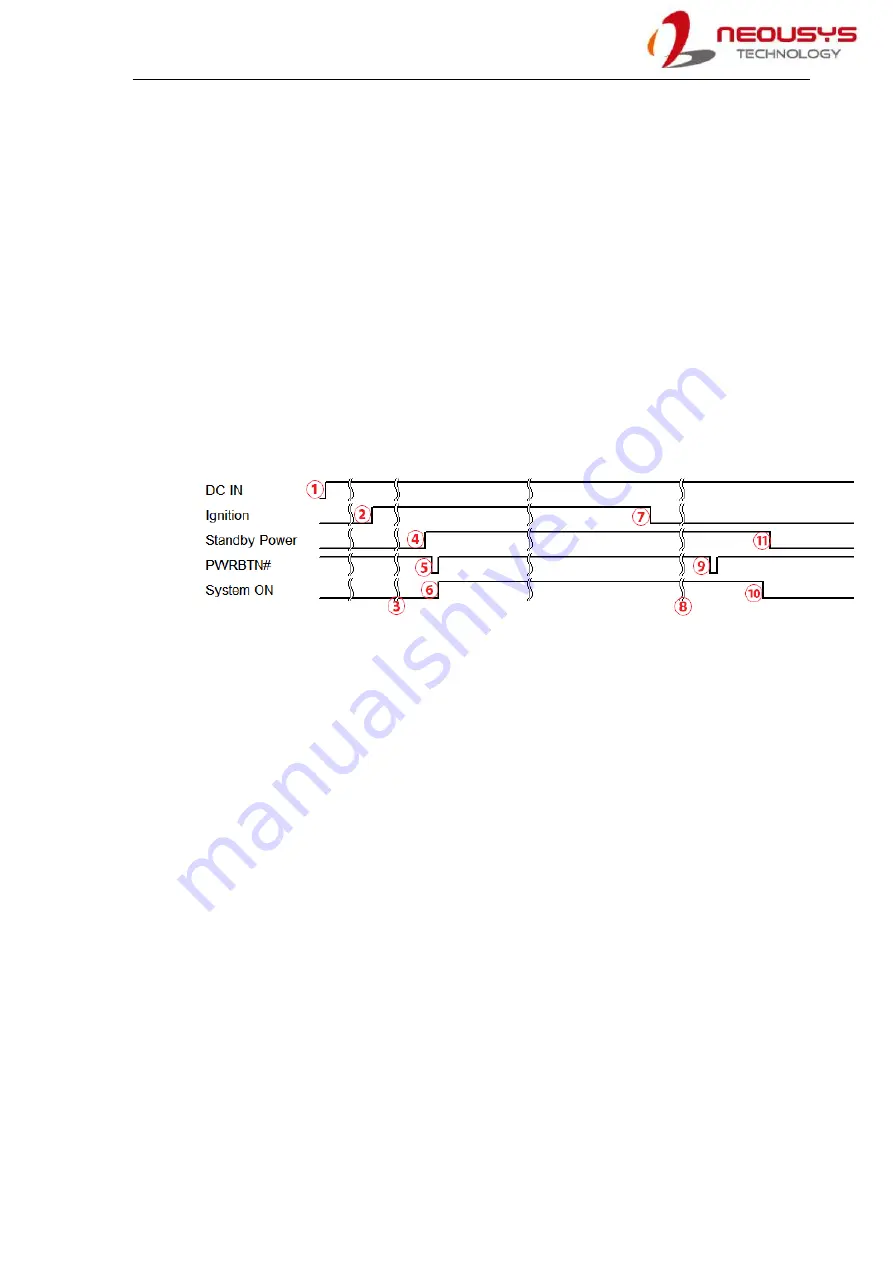
Nuvo-7531 Series
68
3.7
Ignition Power Control (Nuvo-7531-IGN Only)
The ignition power control module for in-vehicle applications is a MCU-based
implementation that monitors the ignition signal and reacts to turn on/off the system
according to predefined on/off delay. Its built-in algorithm supports other features such as
ultra-low power standby, battery-low protection, system hard-off, etc. In this section, we’ll
illustrate the principle of ignition power control and operation modes.
3.7.1
Principles of Ignition Power Control
The basic concept of ignition power control module is to control the timing correlation
between ignition signal and system power status. A typical timing correlation is described in
following diagram.
1. When DC power is supplied to the system, MCU starts to periodically detect ignition
signal. Note that only MCU is working at this moment and the overall power consumption
is less than 2 mW.
2. Ignition signal is active (both 12VDC and 24VDC ignition signals are accepted).
3. MCU starts to count a pre-defined power-on delay.
4. Once power-on delay expired, MCU turns on necessary standby power for the system
(3.3VSB & 5VSB).
5. A PWRBTN# pulse is then issued to turn on the system (equivalent to one pressing the
power button on the front panel).
6. The system is booting and becomes operational.
7. After a period of time, the ignition signal becomes inactive.
8. MCU starts to count a pre-defined power-off delay.
9. Once power-off delay expired, another PWRBTN# pulse is issued to perform a soft-off for
the system (ex. a normal shutdown process for Windows system).
10. The system is completely shut down.
11. As MCU detects system is off, it turns off the standby power for the system, and operates
in low power mode again (< 2mW power consumption).
















































